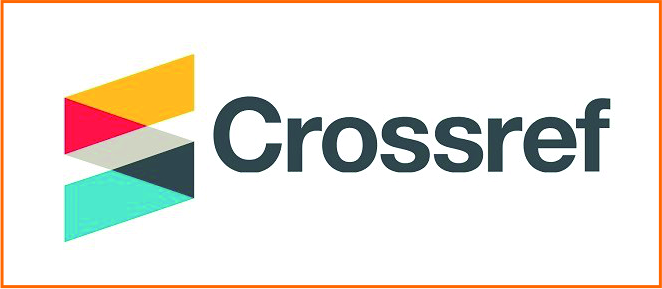EFEKTIVITAS PROGRAM USAHA EKONOMI PRODUKTIF KELOMPOK USAHA BERSAMA DALAM PEMBERDAYAAN MASYARAKAT MISKIN DI KABUPATEN BANJAR
Abstract
The aim of this study; 1) Describe and analyze the effectiveness of the Joint Business Group Productive Economic Enterprises (UEP-KUBE) program in Empowering the Poor in Banjar District. 2) Analyze the inhibiting factors for the Effectiveness of the Joint Business Group Productive Economic Business Program (UEP-KUBE) in Banjar Regency. The research method uses a qualitative approach with a descriptive qualitative research type. Based on the results of research on the Effectiveness of the Joint Business Group Productive Economic Business Program (UEP-KUBE) in Empowering the Poor in Banjar Regency, in reality it can be said to be ineffective, because it has not fulfilled all indicators of effectiveness factors, namely Target Accuracy, Program Outreach, Program Objectives, Program Monitoring. The factors that become obstacles in the Effectiveness of the Joint Business Group Productive Economic Business Program in Empowering the Poor in Banjar Regency are based on the findings of researchers, such as 1) Culture, people tend to have individual characteristics, and do not want to work together in a group. 2) The technology used is still limited or inadequate. 3) The education of the recipient group is still low. 4) Poor social relations, this is because there is no cooperation in one group and each individual is competing to market the results obtained. 5) Economy, people use private funds to add feed. This causes the output to be greater than the input. 6) Natural Factors, is Floods hampered the implementation of the UEPKUBE program. Floods were experienced in several areas in Banjar Regency.
Keywords: Effectiveness, Joint Business Group Productive Economic Business Program
Full Text:
PDF (Bahasa Indonesia)References
Afrizal. 2017. Metode Penelitian Kualitatif. Depok: PT. Raja Grafindo Persada.
Streers, Richard M. 2005. Efektivitas Organisasi. Jakarta: Erlangga.
Sugiyono. 2019. Metode Penelitian Kuantitatif, Kualitatif dan R&D. Bandung: Alfabeta. CV
Sutrisno Edi. 2007. Manajemen Sumber Daya Manusia. Jakarta: Kencana.
Hlm:125- 126
Dalam Mardikanto. 2013. Pemberdayaan Masyarakat Dalam Perspektif Kebijakan Publik. Bandung: Alfabeta. Hlm: 86 52 Dalam Steers. 1985. Hlm: 53
Winardi. 2010. Asas-Asas Manajemen. Bandung: Mandar Maju. Hlm: 7 Haryadi. 2011. Evaluasi Implementasi Program Pemberdayaan Masyarakat, Prospektif. Yogyakarta: PPSK. Hlm: 17 49.
Sondang P. Siagian, 2006. Manajemen Sumber Daya Manusia, Edisi I, Cetakan Ketiga Belas. Jakarta: Bumi Aksara.
Thoha, M. (2008). llmu Administrasi Publik Kontemporer (Pertama). Jakarta: Kencana
Purwanto, N.A. (2020). Administrasi pendidikan (teori dan praktik di lembaga pendidikan). Yogyakarta: Intishar Publishing.
Ansar. 2012. Jurnal Ilmu Administrasi dan Ilmu Sosial. Edisi: Vol. I No. II Juli – Oktober 2012 ISSN: 2252 – 9705. Universitas Islam Makassar. Makassar.
Tami Astari Zulkarnain, Meyzi Heriyanto,Febri Yuliani 3JSDMU: Jurnal Sumber Daya Manusia Unggul Vol. 1, No. 1, Desember 2020
Reza Zulfikar, 2017. Efektivitas Program Pemberdayaan Masyarakat Fakir Miskin (P2FM) Pada pemberdayaan Masyarakat Miskin di Kecamatan Balung Kabupaten Jember (Perspektif Anggota Kelompok Usaha Bersama). Universitas Jember.
Mutia, Agustina (2019) Analisis Efektivitas Program Kelompok Usaha Bersama Dalam Pemberdayaan Masyarakat Miskin Di Kota Jambi. UIN Sulthan Thaha Saifuddin Jambi
Amanah Aida Qur'an (2017) Pemberdayaan Masyarakat Pada Kelompok Usaha Bersama (Kube) (Studi Pada Kube Kaligondang Purbalingga Jawa Tengah).
Dwiyanto, A. (2008). Mewujudkan Good Governance Melalui Pelayanan Publik. Yogyakarta: Gajah Mada University.
DOI: https://doi.org/10.20527/jpp.v6i1.9511
Refbacks
- There are currently no refbacks.

_(1)_(1)3.png)












